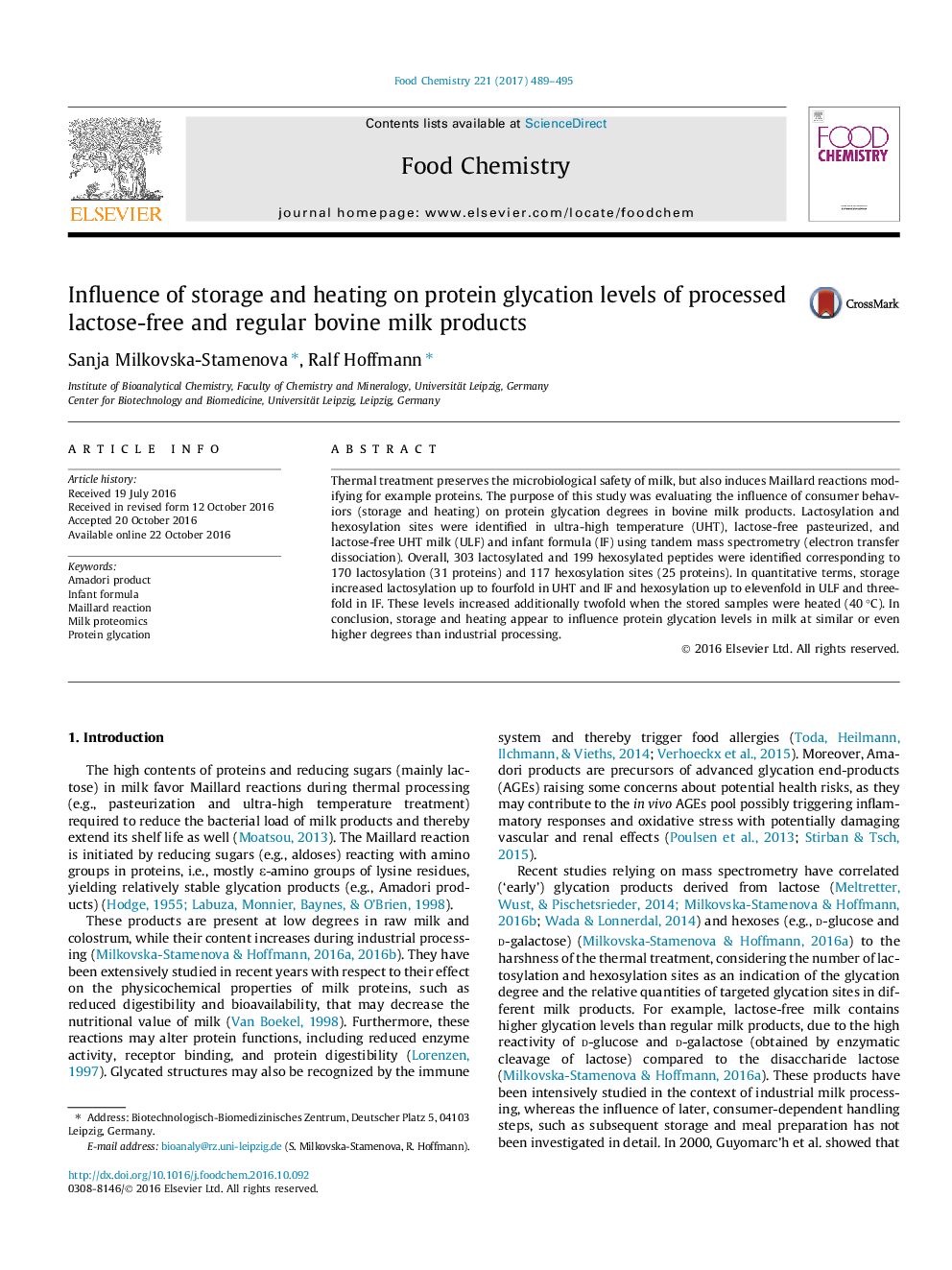| Article ID | Journal | Published Year | Pages | File Type |
|---|---|---|---|---|
| 5133760 | Food Chemistry | 2017 | 7 Pages |
â¢303 lactosylated and 199 hexosylated peptides were identified and quantified.â¢Storage increased lactosylation up to fourfold in UHT milk and infant formula.â¢Storage increased hexosylation up to elevenfold in lactose-free UHT milk.â¢Warming increased the glycation degrees additionally twofold in the stored samples.â¢Glycation degrees depend on both industrial processing and customers' handling.
Thermal treatment preserves the microbiological safety of milk, but also induces Maillard reactions modifying for example proteins. The purpose of this study was evaluating the influence of consumer behaviors (storage and heating) on protein glycation degrees in bovine milk products. Lactosylation and hexosylation sites were identified in ultra-high temperature (UHT), lactose-free pasteurized, and lactose-free UHT milk (ULF) and infant formula (IF) using tandem mass spectrometry (electron transfer dissociation). Overall, 303 lactosylated and 199 hexosylated peptides were identified corresponding to 170 lactosylation (31 proteins) and 117 hexosylation sites (25 proteins). In quantitative terms, storage increased lactosylation up to fourfold in UHT and IF and hexosylation up to elevenfold in ULF and threefold in IF. These levels increased additionally twofold when the stored samples were heated (40 °C). In conclusion, storage and heating appear to influence protein glycation levels in milk at similar or even higher degrees than industrial processing.
